My fly boxes
{{start}}
The number of fly boxes you carry is obviously one of personal choice. One difficulty you may encounter when you are setting up your fly boxes is which flies you should include, and how many flies you should carry in your fly box or boxes. The last thing you want to be doing is standing on the bank of a river madly pulling flies out to find a fly you know is there . . .somewhere, but it isn’t where you expected to find it or you fly box or boxes are so crowded with flies that the one you are desperately looking for is hidden away . . . somewhere.
{{end}}
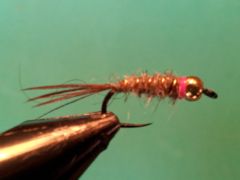
{{+1}}TBH collared hare and copper{{-1}}
{{start}}
A very effective fly yet perhaps the simplest of bead heads to tie. With elements of the hare and copper and an Adams fly in the dressing its logical that its default name became "hare and adams".{{end}}
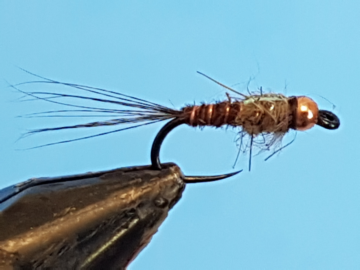
{{+1}}TBH flash back PTN{{-1}}
{{start}}
Jeremy Lucas was our river coach leading up to the 2012 World Fly Fishing Championships and was very keen on thinner flies for this early season competition. I think its a great interpretation of a classic fly and commend it for your consideration.{{end}}
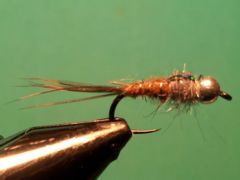
{{+1}}Marko’s go to fly{{-1}}
{{start}}
I was introduced to this fly at the 2012 World Fly Fishing Championships during the training sessions by our guide Marko Gradnik. This was his "go to" fly for all the river sectors of the competition and produced fish for all the Australian World team members.{{end}}
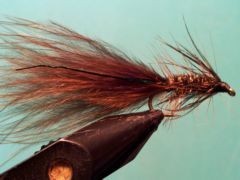
{{+1}}Brown damsel bugger{{-1}}
{{start}}
Unfortunately for the midge it's not only swallows that have them on their menu it's also carnivorous damsel nymphs and then of course further up the food chain trout.{{end}}
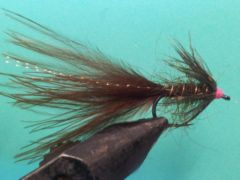
{{+1}}Brown pink hot head bugger{{-1}}
{{start}}
You can of course tie a hot head on any fly and from time to time when I am tying flies I add hot thread head to a couple of flies just to ensure that I have some options in my fly boxes. This fly takes the hot head concept to the next step and includes a bigger than average thread head which is a significant feature of the fly.{{end}}
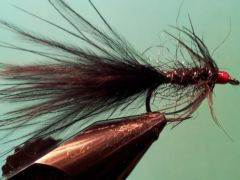
{{+1}}Black and red hot head bugger{{-1}}
{{start}}
I generally only tie it in two versions the fly described below and a brown and pink version. Particularly if the water is a little discoloured I find these flies work well either as middle dropper attractor flies or as my top dropper bob fly but from time to time also fish them on the point particularly if fish are switched onto small flies.{{end}}
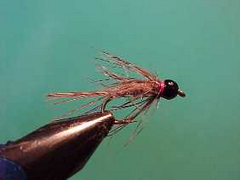
{{+1}}TBH hybrid caddis spider{{-1}}
{{start}}
This is my favourite hybrid of a spider fly and a bead head nymph with a tungsten bead up front. I carry this fly in two sizes and find them particularly useful in situations where I need a bit of weight to get a fly down yet still want the anchor fly to fish well and be enticing to trout rather than just being an anchor for other flies in the team. This is a great buggy looking fly and the tail and soft hackle provide plenty of movement.{{end}}
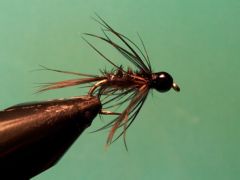
{{+1}}TBH brown and peacock hybrid spider{{-1}}
{{start}}
Brown and peacock hybrid spider nymphs are good buggy looking flies and the tail and soft hackle provide plenty of movement. One of these hybrid spider nymphs on the top dropper and two unweighted spiders or nymphs below can be a real tease for trout.{{end}}
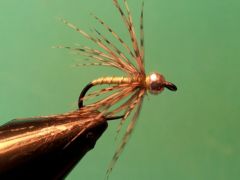
{{+1}}Tungsten bead head chartreuse and partridge spider{{-1}}
{{start}}
Bead head spiders fish very well in conjunction with traditional spider flies and give you the opportunity of adding a bit of flash to your team and more importantly get your team down a little. The benefit of that of course is that the added depth gives a little more vertical travel to your team of flies as they swing round at the end of the drift and start to lift, which as we all know is when the majority of hits occur when swinging spiders.{{end}}














